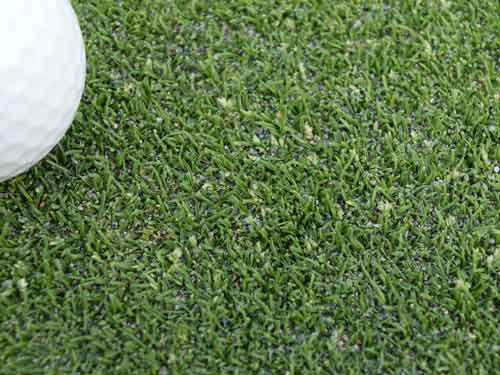DMI’s: A Great Early Season Option in Cool-season Turf
The most effective preventative disease programs (fairy ring, brown ring patch, take-all patch, etc) begin with a demethylation inhibitor (DMI) fungicide applied at soil temperature averaging 55-60°F (2” depth). Although SDHI’s (succinate dehydrogenase inhibitor) are sometimes suggested for spring applications, DMI fungicides provide more benefits including:
- Early season knockdown of summer diseases: DMI fungicide applications beginning at soil temperature averaging 55-65°F (2” depth) will help to control all of these diseases that typically don’t appear until summer but become active in early-spring:
- Fairy ring
- Dollar spot
- Brown ring patch (Waitea patch)
- Anthracnose
- Summer patch
- Take-all patch
- Choosing the correct fungicide:
- For creeping bentgrass greens where fairy ring and dollar spot are usually the primary concerns, Densicor®, Bayleton® Flo or Tartan® Stressgard® is recommended and repeated 28 days later with any of the three fungicides
- For mixed annual bluegrass/creeping bentgrass greens, all of the diseases listed above are potentially problematic:
- If brown ring patch is not an issue, apply Bayleton Flo or Tartan Stressgard followed 28 days later by Densicor or Mirage® Stressgard
- If brown ring patch is an issue, apply Densicor or Mirage Stressgard and repeat 28 days later by either fungicide. An additional application at 14 to 21 days after the initial application may be needed to control brown ring patch if it is severe
- DMI’s are an important MOA for rotation:
- Fungicides with different MOA’s should be rotated when targeting specific diseases to limit the chance of resistance development
- Some turf managers have moved away from the DMIs for various reasons, but this class of chemistry offers some of the broadest disease control we have in the turf industry
- A note on DMI’s and cool-season greens – certain DMI fungicides can cause growth regulation or phytotoxicity on cool-season greens in the heat of summer
- Envu’s newest DMI, Densicor , exhibits excellent cool-season turfgrass safety applied alone or in combination with growth regulators
- Envu DMI fungicides (Tartan Stressgard and Mirage Stressgard) are commonly used on cool-season greens throughout the year with improved turf quality and no significant growth regulation or phytotoxicity (Fig. 1)
- Using DMI’s in the spring/early summer will help mitigate these concerns and subsequently target a broad spectrum of soil-borne and foliar diseases throughout the summer
- Need more info? – Contact your Envu Area Sales Manager if you need assistance.
Figure 1. Mirage Stressgard improves turf quality compared to the untreated and generic tebuconazole on creeping bentgrass/annual bluegrass plots as measured by the area under the turf quality progress curve (AUTQPC). Applications were made every 14 days from 24 May to 18 July and included PrimoMaxx® at 0.125 oz/1000 sq ft, Mirage Stressgard at 1 oz/1000 sq ft, and tebuconazole at 0.6 oz/1000 sq ft (equivalent ai rate as Mirage). Letters are LSD(0.05) for comparing between treatments. University of Connecticut, 2018.
Summer patch and other mid-summer diseases like anthracnose, brown ring patch and dollar spot can be minimized with DMI fungicides applied in the early season, initially at 55-60oF at 2” soil temperatures (Envu).



